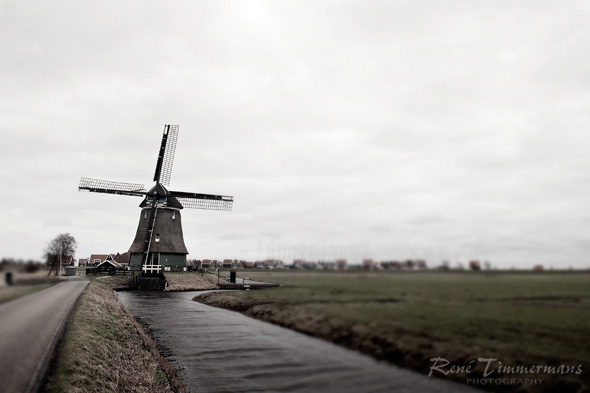
by René Timmermans | Feb 20, 2011 | Photography
 Windmill near Volendam, Noord-Holland
Windmill near Volendam, Noord-Holland
Due to family reasons I am currently spending some time away from home and back in my country of birth, the Netherlands.
Although I have visited the Netherlands the past years frequently I never spent much time to seriously photograph it. Actually, some Dutch cows are currently the only gallery in my portfolio from the country I lived in for more than 30 years (you can view them here).
Now that I have lived abroad for many years it seems that I view my previous home with different eyes. While I was living there it would not have had my preference to go out and shoot some images in stormy and cloudy weather, but it was different two weeks ago.
There was a heavy storm with very strong winds and regular rainfall a few weekends ago. Flights from Schiphol airport were delayed or even canceled and traffic on the roads was seriously effected. These were the conditions I went out with my camera (I did not even bother to take my tripod with me) and shot the attached photos.
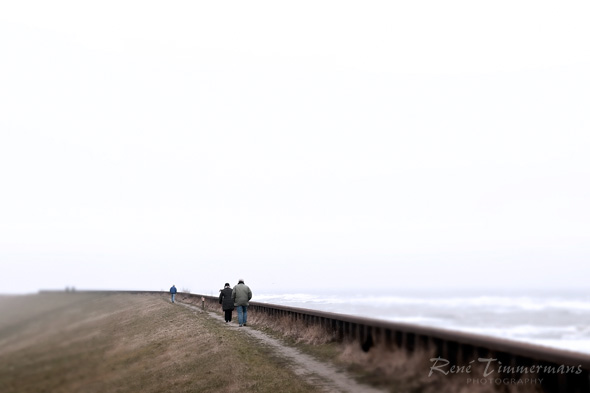 “Towards the end” at the coastline of Petten, Noord-Holland
“Towards the end” at the coastline of Petten, Noord-Holland
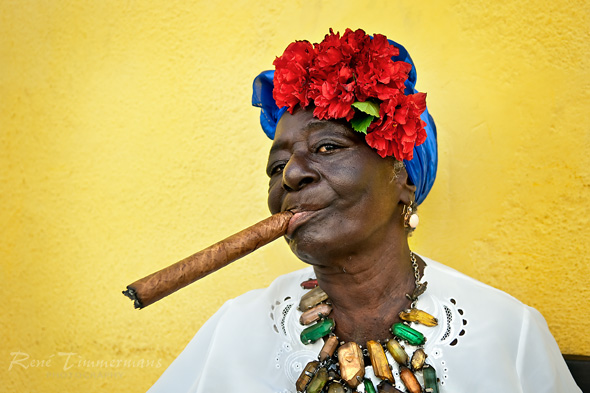
by René Timmermans | Feb 13, 2011 | Photography
 Cuban woman in the streets of Havana.
Cuban woman in the streets of Havana.
Complexd Magazine, the UK’s 1st Digital Magazine celebrating multicultural women, has published their fifth issue last Friday.
Complexd Magazine is a bi-monthly fashion & lifestyle publication for multicultural women, which delivers rich content that is visually diverse and representative of reality.
Four of my photos from the Cuba (above), China (below) and Vietnam galleries are published in their Travel & Lifestyle section.
Click here to go directly to the Love Thy Woman issue of Complexd Magazine. The Travel & Lifestyle section starts at page 76, however, this latest issue of Editor-in-chief Kered Clement has once again turned out to be a wonderful and interesting magazine and I can recommend you to read it from beginning to end.
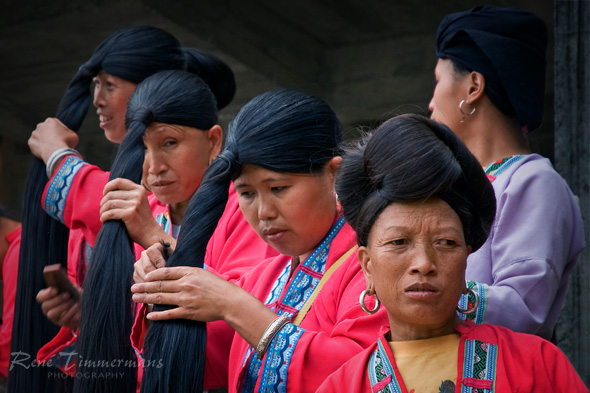 Chinese Zhuang women brushing their hair.
Chinese Zhuang women brushing their hair.
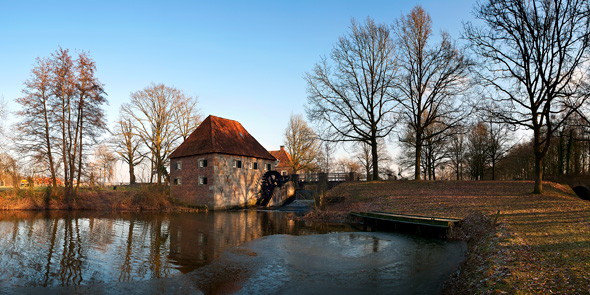
by René Timmermans | Feb 6, 2011 | Photography

The “Mallumsche Molen” (Mill of Mallum) is located in the eastern part of Holland (the Netherlands) in the village of Eibergen, my hometown.
This wheat-mill was first built in 1188. The villagers of Eibergen were required to get their wheat grained at this mill. The mill existed out of two parts, a wheat-mill and an oil-mill. During a fire in 1746 both buildings were destroyed. In 1748 the wheat-mill was rebuilt. In 1960 the mill was completely restored.
Even at present day the mill is in operation on every Saturday afternoon and can be visited by the public for a demonstration.
The village of Eibergen, located along the river Berkel, originated in the 12th century. The river Berkel runs from Vreden, in Germany, to Zuthpen and was an important transportation route at the time.
For more information about the village of Eibergen please visit VVV Eibergen or Historische Kring Eibergen (both in Dutch).
The above image is a panorama photo built out of 8 individual images stitched together using photo-merge in Adobe Photoshop CS5. The image below is a single photo and a close-up of the water wheel of the mill.
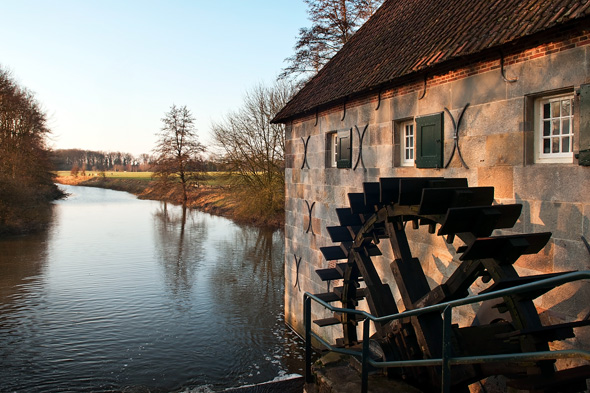
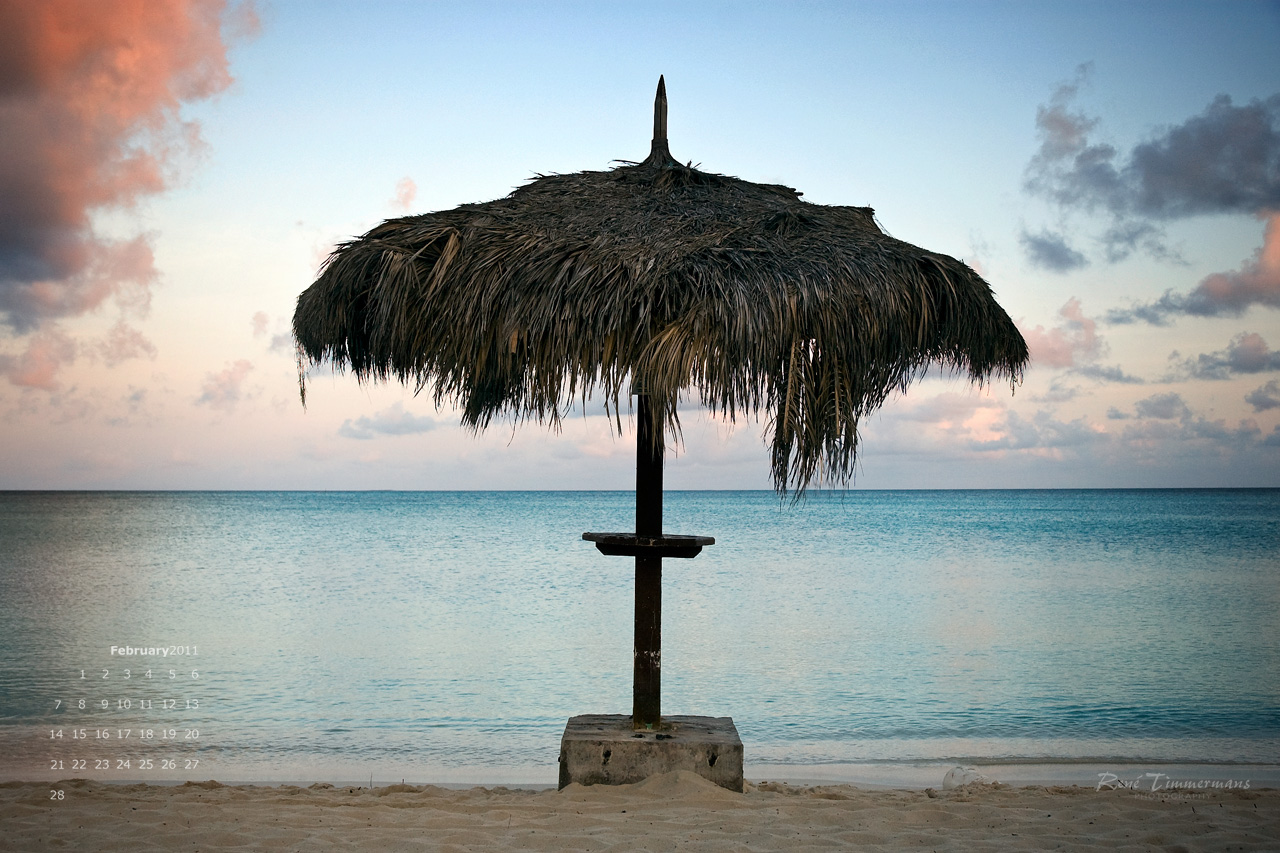
by René Timmermans | Jan 31, 2011 | Wallpaper

In these days of darkness, snow, rain and low temperatures it is good to be reminded of the warm summer season to come. Therefor my February 2011 wallpaper is dedicated to a summer seaside beach view of a palm leaf parasol.
The image was taken on Aruba, the “Happy Island” in the Caribbean, during an early morning sunrise at Palm Beach.
For more of my Aruba images please visit the Aruba gallery.
Click on the image above to get the small version (1280x853px).
Click here if you want to get the large version (1920x1200px).
If you would like the wallpaper in another size just drop me a note.
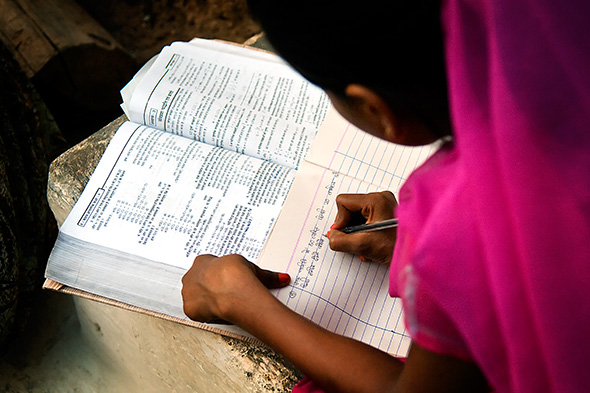
by René Timmermans | Jan 15, 2011 | Photography
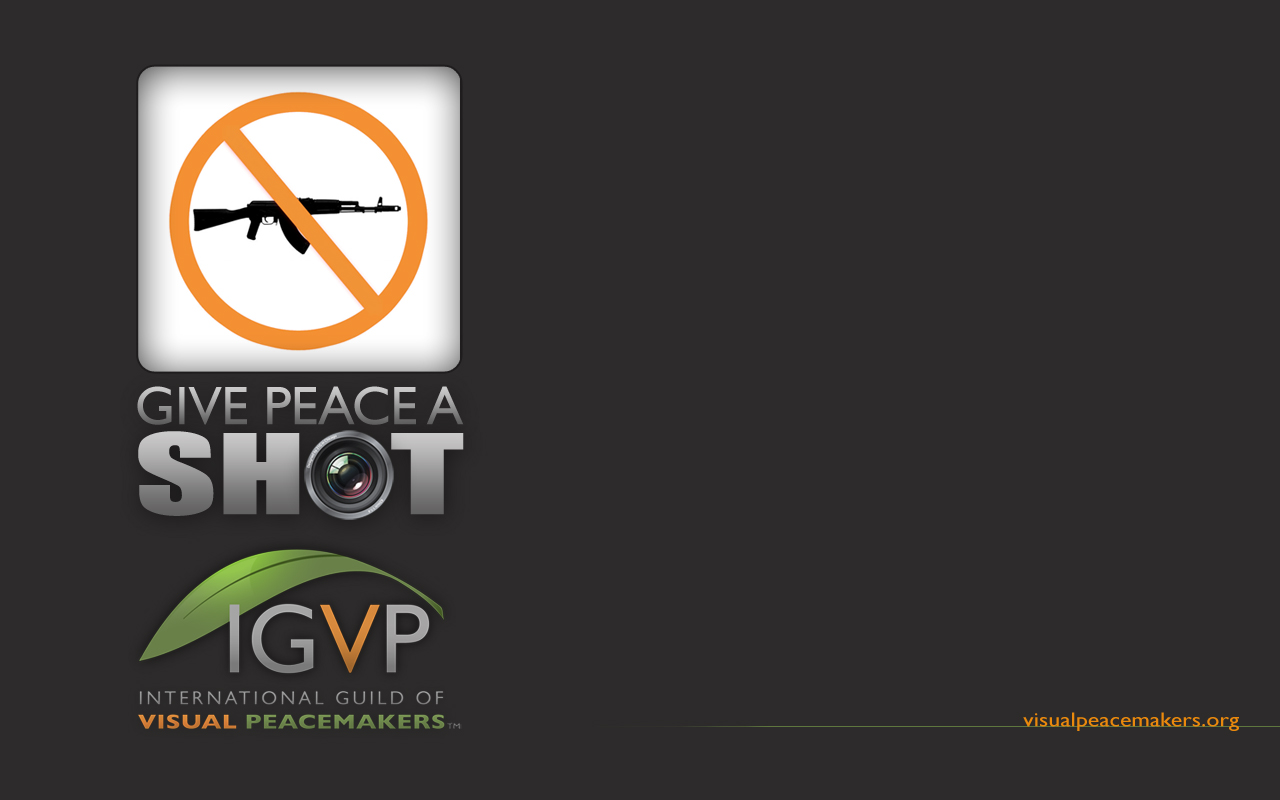
Since the beginning of this year I am a proud member of the International Guild of Visual Peacemakers (IGVP).
The IGVP is a group of visual communicators devoted to peacemaking and breaking down stereotypes by displaying the beauty and dignity of various cultures around the world.
The International Guild of Visual Peacemakers (IGVP) was created to build bridges of peace across ethnic, cultural, and religious lines through visual communication that is both accountable to an ethical standard and created by those who authentically care about people.
The ethical code for all involved in visual peacemaking:
Actions
The way in which visual content is created directly impacts both our subjects and the outcome of the work itself. Visual peacemakers must be mindful of the person and the picture. The following actions and behaviors are essential to the visual peacemaking process—before, during, and after.
1. We research and respect the culture we are documenting.
2. We value our subjects by taking measures to interact with or involve them, and by treating storytelling and image-making as a collaboration.
3. We use discernment in candid photography and videography, and all published material, because another’s dignity and honor matters to us.
4. We inquire about how others are impacted by our images, examining the actual results of our best intentions.
5. We are intentional about highlighting common humanity through images and storytelling.
6. We explore both macro and micro factors that affect a place or people in an effort for multidimensional coverage.
7. We refrain from making an image if asked not to.
8. We foster the courage to delete some images that may reinforce destructive stereotypes, or publish them only along with other images that tell a more complete story.
9. We refine and upgrade our own vision, because well-crafted images have greater potential for effective visual peacemaking.
10. We live generously by helping others around us, wherever we are, and by volunteering to support the visual peacemaking movement with our talents and resources.
Attitudes
Our attitudes also impact both our subjects and the outcome of the work. Attitudes govern actions. Attitudes shape the “what” and “how” we create, even the “why.”
1. We remain mindful of the impact and consequences our images may have.
2. We regard others as innately valuable and equipped with meaningful capacity.
3. We acknowledge the subjectivity of our own vision and choices of what to include or not include in the frame.
4. We cultivate the conviction to go to places where there is great need for visual peacemaking.
5. We stay humble, learning and receiving from our subjects and other visual peacemakers.
6. We receive photographs instead of take them.
7. We ground ourselves in the humanity we all share when faced with differences, “otherness,” or bewilderment.

You can visit my membership page here.

 Windmill near Volendam, Noord-Holland
Windmill near Volendam, Noord-Holland “Towards the end” at the coastline of Petten, Noord-Holland
“Towards the end” at the coastline of Petten, Noord-Holland
 Chinese Zhuang women brushing their hair.
Chinese Zhuang women brushing their hair.




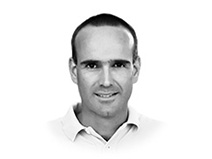


Recent Comments